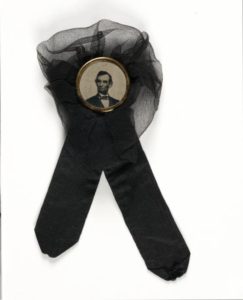 The mood in Washington was euphoric. After four long years the war was nearly over. Lincoln had anticipated this ending in his second inaugural address, reminding northerners that they should welcome southerners back into the Union:
The mood in Washington was euphoric. After four long years the war was nearly over. Lincoln had anticipated this ending in his second inaugural address, reminding northerners that they should welcome southerners back into the Union:
With malice toward none, with charity for all, with firmness in the right as God gives us to see the right, let us strive on to finish the work we are in, to bind up the nation’s wounds, to care for him who shall have borne the battle and for his widow and his orphan, to do all which may achieve and cherish a just and lasting peace among ourselves and with all nations.
Not everyone agreed with Lincoln’s “without malice” sentiment. Radical Republicans wanted the South to pay dearly for its treasonous actions. But those decisions would come later; now was the time for celebration. Buildings were decorated with patriotic red, white, and blue bunting; flags were everywhere and everyone seemed happy in the nation’s capital.
Then tragedy. President and Mary Lincoln were joined at Ford’s Theatre on Good Friday, April 14, by Major Henry Rathbone and his fiancée, Clara Harris. A night out to see the long-running comedy Our American Cousin would give Lincoln a chance to put thoughts of war behind him.
During the performance, at about 10:14 p.m., actor and southern sympathizer John Wilkes Booth stealthily entered the rear of the box. He pressed a small derringer pistol to the back of Lincoln’s head, and fired. Slashing at Rathbone’s arm as he climbed over the rail of the second-story theater box, Booth caught his spur on the American flag decorating the outside, breaking his leg as he landed on the stage. He shouted the Virginia state motto, Sic semper tyrannis (“thus ever to tyrants”), as he escaped out the back door and onto a waiting horse. It took an army of pursuers twelve days to catch up with Booth, who was finally shot and killed while hiding in a tobacco barn.
The unresponsive Lincoln was carried across the street to Petersen’s boarding house, where he clung to life until the next morning, dying without regaining consciousness at 7:22. Secretary of War Edwin Stanton captured the moment with, “Now he belongs to the ages.” The sixteenth President of the United States was dead just days after the long war that dominated his entire presidency had ended.
Lincoln’s body lay in state in the White House before being loaded on a train for the long, arduous trip back to Springfield. The route retraced that which Lincoln had taken when he first came to Washington four years before, making many stops so that people could see him one last time. Millions more saw his train as it made its way home for burial in the Lincoln tomb at Oak Ridge Cemetery.
For a “contemporary” newspaper coverage of the event, see Extra!! President Abraham Lincoln is Dead.
[Adapted from Lincoln: The Man Who Saved America]
David J. Kent is the author of Lincoln: The Man Who Saved America. His newest Lincoln book is scheduled for release in February 2022. His previous books include Tesla: The Wizard of Electricity and Edison: The Inventor of the Modern World and two specialty e-books: Nikola Tesla: Renewable Energy Ahead of Its Time and Abraham Lincoln and Nikola Tesla: Connected by Fate.
Follow me for updates on my Facebook author page and Goodreads.











Soon after Mr. Lincoln’s assassination, Charlotte Scott, an emancipated slave, brought five dollars to her former master… It was her first earnings as a free woman, and she begged that it might be used “to make a monument to Massa Lincoln, the best friend the colored people ever had.” The suggestion was cordially accepted, and a circular letter was published inviting all freedmen to send contributions for the purpose…
A wonderful tribute, although the design is still controversial today. Glad you are working to bring Charlotte Scott’s, and Archer Alexander’s, stories to light.